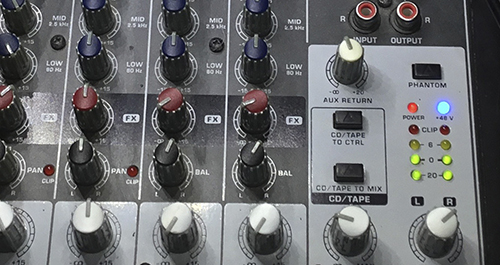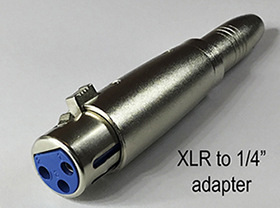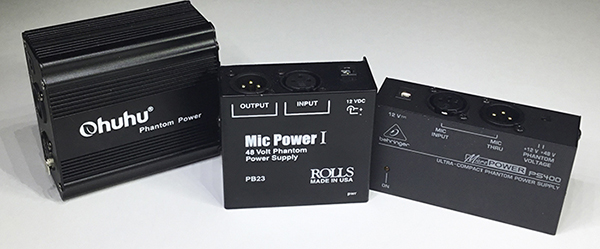 |
PHANTOM POWER: What You Need to Know!With the release of the new Amulet M PhantomTM, this is a good time to talk a little about phantom power, as the concept may not be a familiar one, especially as it applies to powering something other than a microphone (in this case, a sophisticated internal guitar preamp).
Phantom power was developed in the mid-1960's as a way to remotely power microphones. 48 volts is applied to the signal wires and picked off inside the microphone to supply power to the internal electronics. The Amulet M Phantom uses this same concept to remotely power our sophisticated preamp inside your acoustic guitar without the use of batteries. There are a number of advantages to this approach… there is less hardware, and therefore less weight added to the guitar: phantom power means no battery, no battery bag, and a lighter weight cable harness to the volume and tone controls. There's never any worry of batteries failing; your instrument will always operate at peak performance all the time via phantom power. The output of the guitar is now a user-adjustable, low impedance, balanced professional line level signal. We've talked before about the many benefits of having a preamp inside your guitar: lower noise and better dynamic performance, much greater resistance to hum and interference problems, clearer note reproduction and more but until now, this has always meant that you had to have a battery and its associated components inside the instrument as well, adding weight and complexity to deal with. Our new Amulet M PhantomTM preamp uses phantom power to allow you to have a featherweight and highly flexible system in your instrument that matches our Acoustic LensTM pickups perfectly, and brings a number of welcome professional touches like user adjustable overall gain (in addition to adjustable pickup balance) and adjustable signal polarity to the party as well… and all with NO BATTERIES! Connection to the guitar is made with a 1/4" TRS to male XLR cable. These are readily available, and our custom shop offers a very nice one made with premium CanareTM cable and rugged connectors that are perfect for this application, all at a very reasonable price.  The Amulet M Phantom is specifically designed to work with 48V phantom power; it will not work with systems that have lower phantom power voltages such as 24 or 12 volts. While this might be fine for some types of microphones, it will not power the Amulet M Phantom correctly, so be sure and check the manufacturer's info for any unit that you are considering for use with our system.
The Amulet M Phantom is specifically designed to work with 48V phantom power; it will not work with systems that have lower phantom power voltages such as 24 or 12 volts. While this might be fine for some types of microphones, it will not power the Amulet M Phantom correctly, so be sure and check the manufacturer's info for any unit that you are considering for use with our system. Most modern mixers have 48V phantom power built into their microphone preamp channels. This means that you can plug the Amulet M Phantom directly into the mic input of your mixer, turn on 48V phantom power and play. If you're not using a mixer or other device that has the necessary phantom power available, there are a number of low-cost phantom power supply units that are available from a variety of sources. These typically have an input and output XLR connector, and internal electronics to supply phantom power.  A bonus of using a standalone phantom power supply is that you can treat the XLR output just as you would an active direct box. Since the output is a balanced low impedance signal, you can plug it directly into an XLR stage box or any other XLR input. If you need a 1/4" unbalanced output to interface to your amp, pedalboard, or other equipment, an inexpensive XLR to 1/4" adapter can be used to easily provide this type of output.
A bonus of using a standalone phantom power supply is that you can treat the XLR output just as you would an active direct box. Since the output is a balanced low impedance signal, you can plug it directly into an XLR stage box or any other XLR input. If you need a 1/4" unbalanced output to interface to your amp, pedalboard, or other equipment, an inexpensive XLR to 1/4" adapter can be used to easily provide this type of output. |

Here's a bit of information on some of the currently available phantom power supplies that we've looked at… RollsTM PB23SterlingTM PHP-1BehringerTM PS400OhuhuTM Phantom Power SupplyPlease contact us with any questions or to place an order
| |||